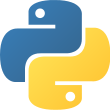 Language
Language
- Python 3
 Reading time
Reading time
- Approximately 31 days
 What you will learn
What you will learn
- Natural Language Processing
 Author
Author
- Jacob Perkins
 Published
Published
- 11 years, 4 months ago
 Packages you will be introduced to
Packages you will be introduced to
- nltk
- numpy
- scipy
- scikit-learn
- pyenchant
- pymongo
- lxml
- beautifulsoup4
About This Book
- Break text down into its component parts for spelling correction, feature extraction, and phrase transformation
- Learn how to do custom sentiment analysis and named entity recognition
- Work through the natural language processing concepts with simple and easy-to-follow programming recipes
Who This Book Is For
This book is intended for Python programmers interested in learning how to do natural language processing. Maybe you've learned the limits of regular expressions the hard way, or you've realized that human language cannot be deterministically parsed like a computer language. Perhaps you have more text than you know what to do with, and need automated ways to analyze and structure that text. This Cookbook will show you how to train and use statistical language models to process text in ways that are practically impossible with standard programming tools. A basic knowledge of Python and the basic text processing concepts is expected. Some experience with regular expressions will also be helpful.
What You Will Learn
- Tokenize text into sentences, and sentences into words
- Look up words in the WordNet dictionary
- Apply spelling correction and word replacement
- Access the built-in text corpora and create your own custom corpus
- Tag words with parts of speech
- Chunk phrases and recognize named entities
- Grammatically transform phrases and chunks
- Classify text and perform sentiment analysis
In Detail
This book will show you the essential techniques of text and language processing. Starting with tokenization, stemming, and the WordNet dictionary, you'll progress to part-of-speech tagging, phrase chunking, and named entity recognition. You'll learn how various text corpora are organized, as well as how to create your own custom corpus. Then, you'll move onto text classification with a focus on sentiment analysis. And because NLP can be computationally expensive on large bodies of text, you'll try a few methods for distributed text processing. Finally, you'll be introduced to a number of other small but complementary Python libraries for text analysis, cleaning, and parsing.
This cookbook provides simple, straightforward examples so you can quickly learn text processing with Python and NLTK.
- Works/Worked at AT&T
